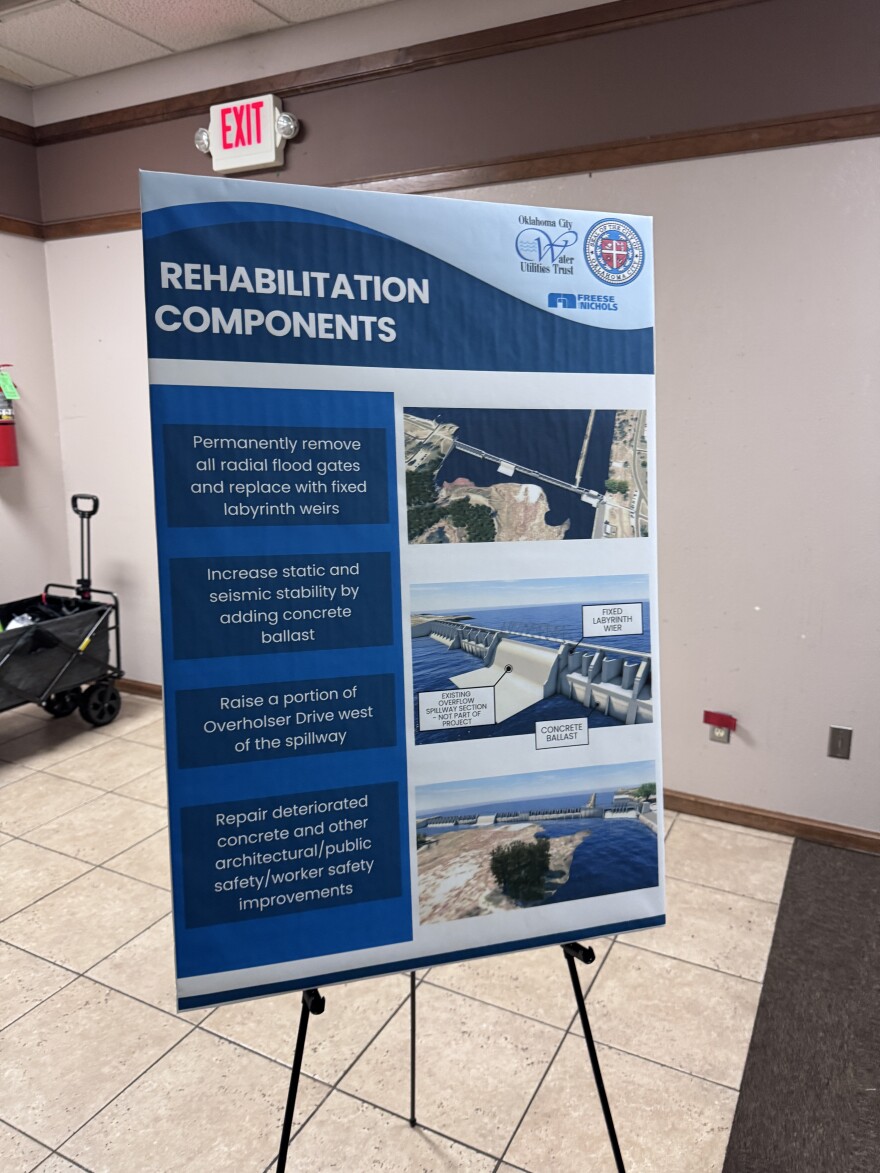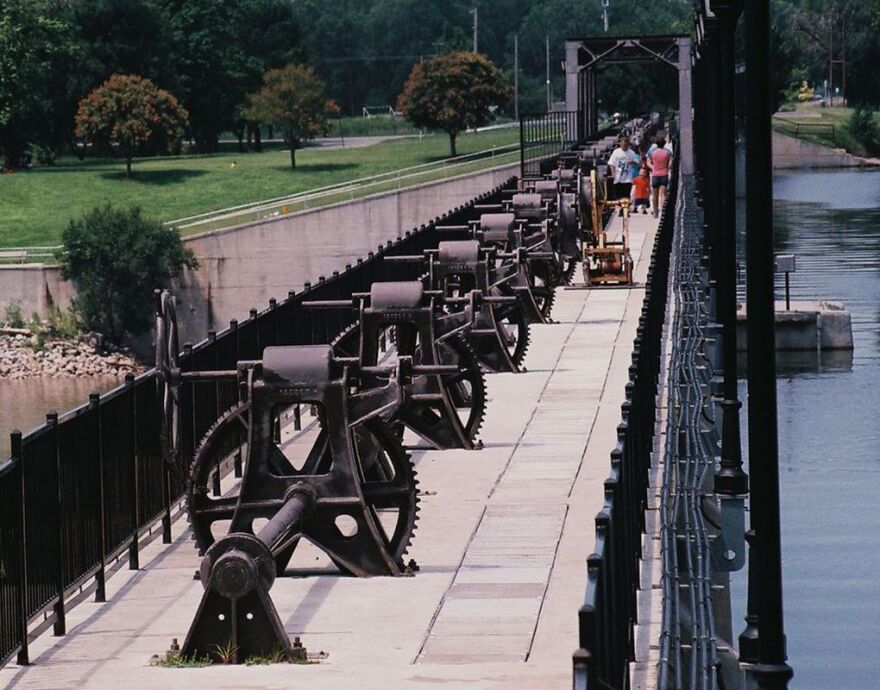The dam was completed in 1918 (around 10,000 people attended its dedication ceremony), then rebuilt in 1923 after damage from repeated flooding. At the time, the dam — which is hollow concrete and not anchored to the ground — had an expected lifespan of 30 years. Instead, it's lasted more than a century, and it hasn't changed much.
But state and federal dam regulations have changed, and the dam no longer meets the requirements. It has nearly two dozen gates, but only one engine to lift them. The engine can move from gate to gate, but it can only open one at a time — a process that takes around 24 hours.
"The dam would be fine if all the gates were operational at the same time, but they're not," said Larry Hare, Oklahoma City Water Utilities Trust's Raw Water Design Manager. "So what this project does is that it replaces the gates with a new concept called a labyrinth weir."
The weir wouldn't have any moving parts. From above, it would look like a concrete zigzag. When water reached the top, it would flow over the point of the downstream zags.

Dam operators don't need precise control over how much water goes through the dam, because its purpose isn't flood control and it isn't in the direct path of the North Canadian River.
"It's off to the side," Hare explained. "So in order to fill the lake up, we also have to close the river gates to back it up.'
When those river gates are open, the North Canadian flows along next to the lake, east of an earthen wall that separates the two.
Lake Overholser was originally built to supply drinking water for the city, but its water treatment plant was decommissioned in 2017. However, Overholser's dam and river gates are still intrinsically tied to the city's water supply, since backing up the Canadian River is also how Lake Hefner is filled, which does supply much of the city's drinking water.
So now, the Water Utilities Trust just needs Overholser to stay full and meet requirements. This more streamlined weir system will simplify operations and make the dam easier to maintain.
The project is expected to cost more than $50 million. The Water Utilities Trust's Deputy Director of Financial Services Vanessa Aguilar said that has been secured through existing water rates, and customers won't see rate hikes to pay for the dam rehabilitation.
"We've been planning for this project — our capital planning process is 30 years, 10 years out," Aguilar said. "We're always looking long term and making adjustments to our financial plan as needed."
The Water Utilities Trust had hoped to pay for much of it using a federal Building Resilient Infrastructure and Communities (BRIC) grant, which Congress created in 2018. But before the Trust's application could be approved or denied, the Trump administration cancelled the program, calling it "wasteful."
"We do leverage grant opportunities as good stewards of our ratepayer funds," Aguilar said. "That positions us to be able to execute more projects. But this project is still funded."
The engineering firm overseeing the dam's rehabilitation modeled what it would look like and what it would cost to get rid of the dam entirely, but Hare said that will not happen any time soon.
"This is a very iconic piece of Oklahoma City history and identity, so it's not feasible at all to try to even think about getting rid of it," he said.
Instead, he hopes more people will be able to enjoy the revamped structure, which will keep the dam's noteworthy gatehouse and the the ship captain wheels above each gate, even though those won't be functional anymore. Hare said he enjoys walking up and down the dam's walkway.

Hare said they're finalizing the design and hope to send the construction contract to bid in early 2026. Construction is expected to take around two years.
"It's still a strong, viable structure," Hare said. "It just needs to be maintained in a better fashion than, unfortunately, we have done in the past. So once we do that, that will extend its life to 50 design years. But we hope much longer than that."
This report was produced by the Oklahoma Public Media Exchange, a collaboration of public media organizations. Help support collaborative journalism by donating at the link at the top of this webpage.









